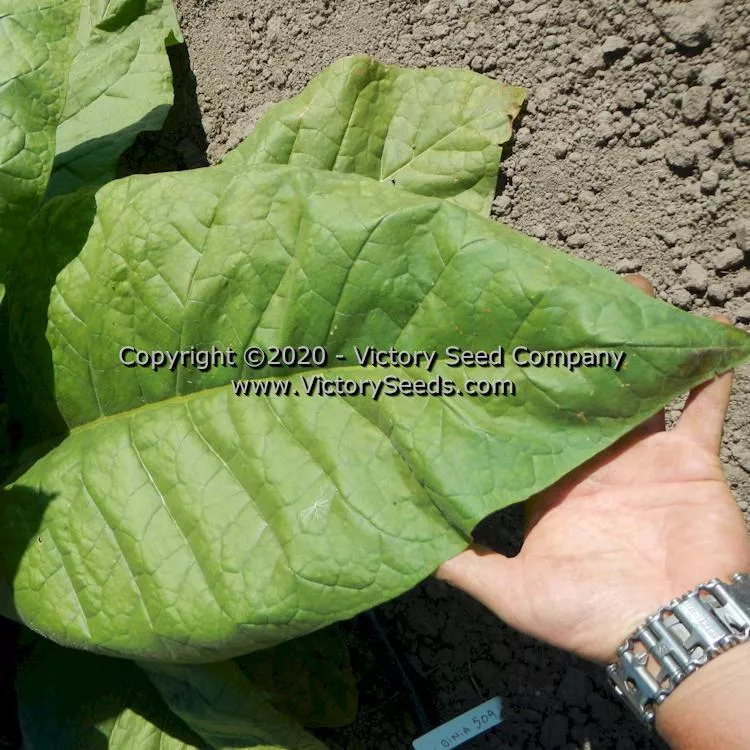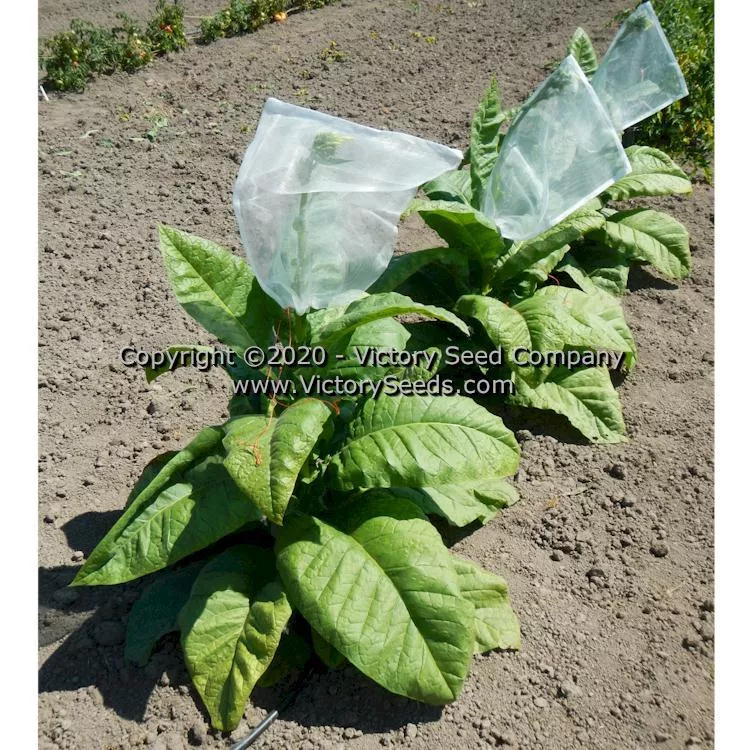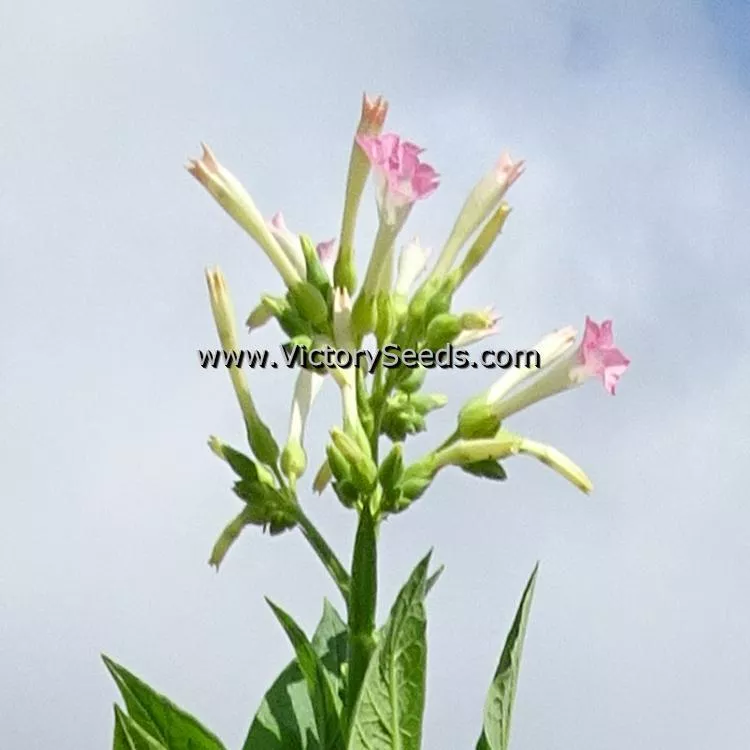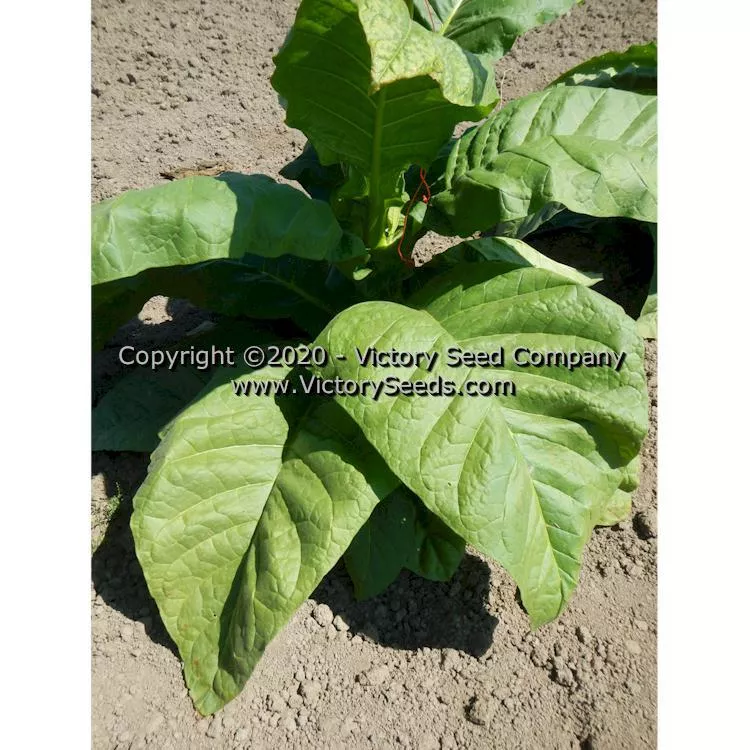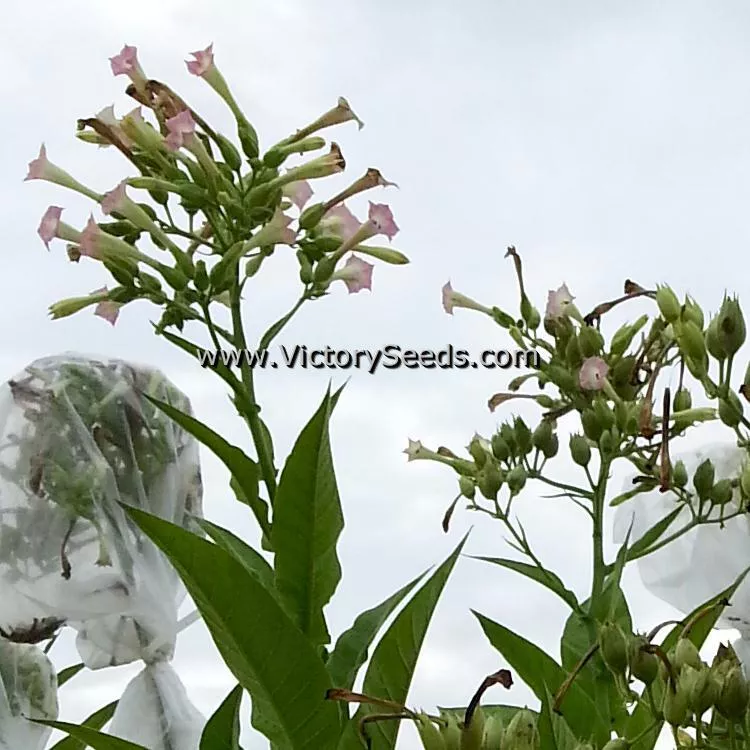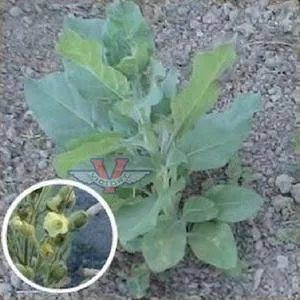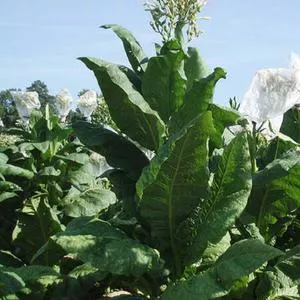




Virginia 509 Tobacco
Nicotiana tabacum
Price: $4.99
SKU: 1002271'Virginia 509' plants grow five to six feet tall with leaves that are closely spaced on the stalk. Its shorter stature provides better resistance to wind blow down than standard sized taller Burley varieties. The leaves turn a golden yellow when ripe, which is in about 60 days after transplanting. 'Virginia 509' has a high resistance to wildfire, moderate resistance to black shank and black root rot, and some resistance to Fusarium wilt.
A Burley-type tobacco, it was bred as a cross between 'Burley 37' and 'Burley 21' and released to commercial seed producers in 1967 in its F8 generation. Our seed originated from USDA accession number TC 84 and sent to us by David Pendergrass from Tennessee.
A Burley-type tobacco, it was bred as a cross between 'Burley 37' and 'Burley 21' and released to commercial seed producers in 1967 in its F8 generation. Our seed originated from USDA accession number TC 84 and sent to us by David Pendergrass from Tennessee.
Main Tobacco Role: filler
Main Tobacco Role: blending
Typical Use: cigarette
Typical Use: pipe
Curing Method: air
Tobacco Type: Burley
Plant Size (Height): 60-72
Days to Maturity: 60
Lifespan: Annual
Sun Requirements: Full Sun
Best sowing Method: Start Indoors
Disease Resistances: Fusarium Wilt
Disease Resistances: Black Shank
Disease Resistances: Black Root Rot
Disease Resistances: Wildfire Disease
Bloom Color: Pink
Genetic Classification: Open Pollinated
Main Tobacco Role: blending
Typical Use: cigarette
Typical Use: pipe
Curing Method: air
Tobacco Type: Burley
Plant Size (Height): 60-72
Days to Maturity: 60
Lifespan: Annual
Sun Requirements: Full Sun
Best sowing Method: Start Indoors
Disease Resistances: Fusarium Wilt
Disease Resistances: Black Shank
Disease Resistances: Black Root Rot
Disease Resistances: Wildfire Disease
Bloom Color: Pink
Genetic Classification: Open Pollinated
Tobacco plants are very interesting, ornamental, and have many uses apart from consumption. Tobacco seeds are not classified as tobacco products. We promote the cultivation of tobacco plants, but we do not promote the use of tobacco products.
Tobacco seeds are tiny and look like dust, but each one has the potential to quickly grow into a huge tobacco plant. They need light to germinate. Sprinkle the seeds onto the surface of a moist and sterile seed starting mix. Do not cover the seeds. They also must never be allowed to dry out, so they are frequently (but gently) watered using a mist from a spray bottle. While waiting for germination, it can help to cover them with some kind of plastic sheeting to help hold moisture.
Once tiny seedlings emerge, you can pick them out one by one and move them into individual cells. Very lightly fertilize and never allow the potting soil to dry out. Within 6 weeks it'll be ready to plant in the garden. Wait until all risk of frost is over before planting outdoors.
For additional information, please have a look at our more detailed guide with photos.
Once tiny seedlings emerge, you can pick them out one by one and move them into individual cells. Very lightly fertilize and never allow the potting soil to dry out. Within 6 weeks it'll be ready to plant in the garden. Wait until all risk of frost is over before planting outdoors.
For additional information, please have a look at our more detailed guide with photos.
Informational References:
- Henderson and Spasoff, Crop Science Journal, 10:211, 1970.
Customer Reviews:
Do you have experience with this one? 📝 📣 Write a review!
No reviews have been posted yet.

